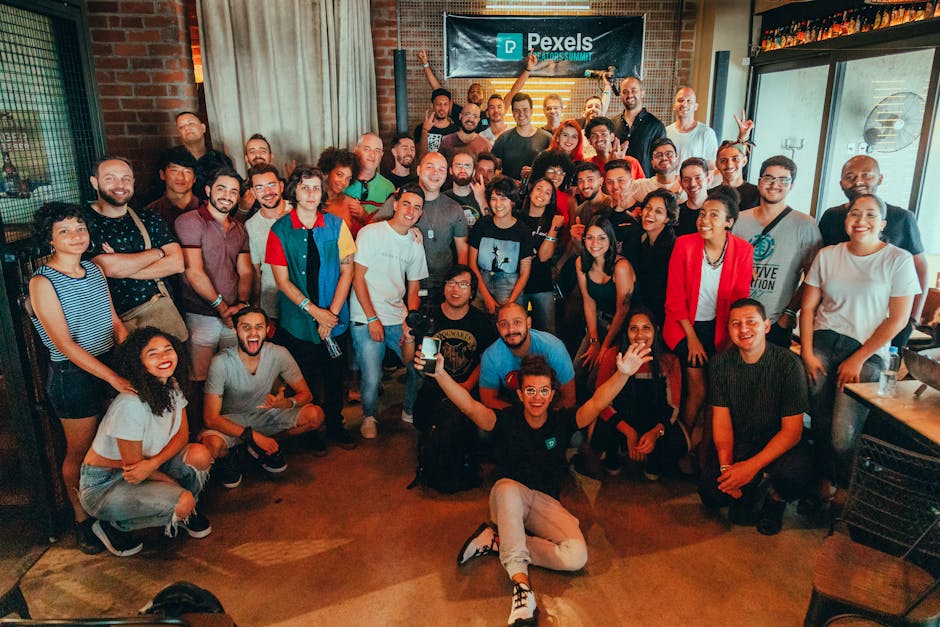Affiliate marketing has emerged as a cornerstone of modern digital revenue generation, particularly for content creators. This comprehensive guide delves into the intricacies of affiliate marketing for creators, providing a robust marketing strategy framework that leverages their unique influence and audience engagement. We will explore its definition, market dynamics, core strategies, and practical applications, ensuring creators can effectively integrate this powerful income stream into their business models.
The landscape of digital marketing is constantly evolving, and affiliate marketing stands out as a performance-based model that rewards creators for driving tangible results. This guide will cover everything from understanding market data and optimizing conversion rates to selecting the right platforms and navigating industry challenges, offering a detailed roadmap for creators to master this essential marketing strategy.
Introduction to Affiliate Marketing for Creators
Affiliate marketing for creators is a performance-based marketing strategy where content creators promote products or services and earn commissions on resulting sales or leads. This model leverages a creator’s online presence, including blogs, social media channels, YouTube, and podcasts, to influence their audience’s purchasing decisions. It’s a symbiotic relationship where brands gain exposure and sales, and creators monetize their influence and content.
The essence of this marketing strategy lies in authenticity and trust. Creators, having cultivated a loyal following, can genuinely recommend products or services they believe in, leading to higher conversion rates compared to traditional advertising. This section will define the core components and benefits of this dynamic revenue model.
What is Affiliate Marketing?
Affiliate marketing is a process by which an affiliate (in this case, a content creator) earns a commission for marketing another company’s products. The affiliate searches for a product they enjoy, then promotes that product, and earns a piece of the profit from each sale they make. The sales are tracked via unique affiliate links.
Why is Affiliate Marketing Ideal for Creators?
For creators, affiliate marketing offers a scalable and relatively low-risk way to monetize their content without needing to create their own products. It aligns perfectly with their existing content creation workflows and audience engagement strategies. Here are key reasons why it’s a powerful marketing strategy for creators:
- Diversified Income Stream: It provides an additional revenue source beyond ads, sponsorships, or direct product sales.
- Leverages Existing Audience: Creators can tap into their established audience’s trust and interest.
- Low Barrier to Entry: No need for inventory, shipping, or customer service.
- Scalability: Once a system is set up, it can generate passive income over time.
- Authenticity: Creators can promote products they genuinely use and love, maintaining credibility with their audience.
Key Components of an Affiliate Marketing Strategy for Creators
A successful affiliate marketing strategy for creators involves several interconnected elements. Understanding these components is crucial for building a robust and effective approach:
- Affiliate Programs: These are the agreements between merchants and affiliates, outlining commission structures, tracking methods, and terms. Examples include Amazon Associates or specific brand programs.
- Unique Affiliate Links: These are custom URLs provided to the creator to track sales or leads originating from their promotions.
- Content Creation: The vehicle for promotion, which can include reviews, tutorials, comparisons, or integrated mentions within videos, blog posts, or social media updates.
- Audience Engagement: The interaction and trust built with the audience, which directly influences the effectiveness of recommendations.
- Performance Tracking: Monitoring clicks, conversions, and earnings to optimize future campaigns.

The Market Landscape of Creator Affiliate Marketing
The affiliate marketing industry is experiencing significant growth, with creators playing an increasingly pivotal role. Understanding the current market size, growth projections, and key players is essential for any creator looking to formulate an effective marketing strategy. This section provides a data-driven overview of the industry’s scale and trajectory.
The expansion of the creator economy directly fuels the growth of affiliate marketing. As more individuals build online audiences, the potential for authentic product recommendations multiplies, making it a lucrative avenue for both creators and brands.
Global Market Size and Growth Projections
The global affiliate marketing spend is a testament to its growing influence. According to Statista and Insider Intelligence, it’s estimated to reach $24 billion in 2024, with a projected Compound Annual Growth Rate (CAGR) of 10.1% from 2023 to 2028. This robust growth indicates a sustained upward trend in investment and reliance on affiliate channels.
In the U.S. market specifically, affiliate marketing is set to generate $9.4 billion in sales by 2025, a significant increase from $8.2 billion in 2023, as reported by the Rakuten Advertising Affiliate Marketing Report 2024. This highlights the substantial financial impact and opportunity within this sector.
Affiliate Marketing’s Share in Digital Advertising Budgets
Affiliate marketing is no longer a niche tactic; it’s a significant component of digital advertising. The Interactive Advertising Bureau (IAB) 2024 report indicates that affiliate marketing accounts for 15% to 20% of total digital media advertising budgets among brands. This substantial allocation underscores its effectiveness and perceived value by advertisers as a performance-driven marketing strategy.
Creator-Specific Earnings and Reliability
Creators are directly benefiting from this market expansion. The Influencer Marketing Hub’s 2024 Creator Economy Report reveals that over 80% of creators involved in affiliate marketing reported earning some income from affiliate partnerships. More impressively, 42% annually earned over $10,000 from these programs.
Earnings vary by creator tier, with top-tier creators (100K+ followers) reporting average annual earnings of $30,000 – $75,000 from affiliate programs. Mid-tier creators (10K-100K followers) typically made around $5,000 to $15,000. This income stream is also noted for its stability; a Creator Economy Survey by MediaKix (2024) found that 68% of creators consider affiliate marketing their most reliable income stream outside of sponsored posts and ad revenue.
| Metric | Value/Projection | Primary Source | Relevance for Creators |
|---|---|---|---|
| Global Affiliate Spend (2024) | $24 Billion | Statista, Insider Intelligence | Indicates a massive and growing opportunity. |
| US Sales Projection (2025) | $9.4 Billion | Rakuten Advertising Affiliate Marketing Report 2024 | Highlights significant domestic market potential. |
| Creators Earning Affiliate Income | 80%+ | Influencer Marketing Hub 2024 | High adoption rate among creators. |
| Creators Earning >$10k Annually | 42% | Influencer Marketing Hub 2024 | Demonstrates substantial earning potential for active participants. |
| Affiliate Share of Digital Ad Budgets | 15-20% | Interactive Advertising Bureau (IAB) 2024 | Shows brands’ increasing trust and investment in affiliate channels. |
Core Strategies and Principles for Creator Affiliate Success
A successful marketing strategy in affiliate marketing for creators extends beyond simply placing links. It requires a deep understanding of audience, authentic content creation, and strategic program selection. This section outlines the fundamental principles and core strategies that empower creators to maximize their affiliate revenue while maintaining credibility.
The emphasis is on building long-term value, both for the audience and the creator, rather than pursuing short-term gains. This approach ensures sustainable growth and stronger audience relationships.
Authenticity and Trust as Cornerstones
The most critical principle for creators engaging in affiliate marketing is maintaining authenticity. Audiences follow creators because they trust their opinions and recommendations. Promoting products that genuinely resonate with the creator’s values and audience needs is paramount. As highlighted by Impact.com’s insights, building trust and addressing key buyer concerns are crucial for high-consideration products.
- Genuine Recommendations: Only promote products or services you have personally used, vetted, and genuinely believe in.
- Transparency: Always disclose your affiliate relationship clearly and conspicuously, as required by regulatory bodies like the FTC.
- Audience-First Approach: Prioritize providing value to your audience over maximizing commissions. Recommendations should solve problems or enhance their lives.
- Consistency: Maintain a consistent tone and quality in your content, whether it’s sponsored or affiliate-driven.
Strategic Product and Program Selection
Choosing the right affiliate programs and products is a critical marketing strategy. It involves researching commission rates, cookie durations, and the relevance of the product to your niche audience. A diverse portfolio of affiliate partnerships can also mitigate risks associated with reliance on a single program.
- Niche Relevance: Select products that naturally fit your content niche and audience demographics. A beauty influencer promoting power tools would lack credibility.
- Commission Structure: Understand the commission rates (e.g., 5% to 15% average, according to CJ Affiliate 2024 Data), recurring commissions (like ConvertKit’s 30% recurring model), and payment thresholds.
- Cookie Duration: A longer cookie duration (e.g., 30, 60, or 90 days) means you earn a commission if the customer purchases within that period after clicking your link, even if not immediately.
- Brand Reputation: Partner with reputable brands that offer good customer service and high-quality products to protect your own brand image.
Content Integration and Promotion Tactics
Effective content integration is where the marketing strategy truly shines. Affiliate links should be seamlessly woven into valuable content, not just dropped in. This requires creativity and an understanding of different content formats.
- Product Reviews: In-depth, honest reviews highlighting pros, cons, and personal experiences.
- Tutorials/How-To Guides: Showcasing how a product solves a problem or enhances a skill.
- Comparison Posts: Helping audiences choose between similar products, positioning your recommended product as the best fit.
- Resource Pages/Gift Guides: Curated lists of recommended tools, books, or products.
- Integrated Mentions: Naturally mentioning and linking products within broader content pieces, such as a “What’s in my bag” video or a “My favorite tools” blog post.

Effectiveness and Conversion Rates in Creator Affiliate Marketing
The true measure of any marketing strategy is its effectiveness, particularly in terms of conversion rates. For creator affiliate marketing, these rates are often significantly higher than traditional advertising, underscoring the power of authentic recommendations. This section delves into the data behind these impressive conversions and the factors that contribute to them.
Understanding what drives these conversions allows creators to refine their approach, optimize their content, and ultimately generate more revenue from their affiliate efforts.
Benchmarking Conversion Rates
Creator-led affiliate marketing boasts impressive conversion statistics. According to the Awin Affiliate Marketing Benchmark Report 2024, conversion rates for affiliate links shared by creators average around 5.2% – 6.7%. This is a substantial leap compared to generic display ads, which typically hover around 0.5-1%.
For creators with highly engaged, niche audiences, these rates can climb even higher, reaching up to 10-12%. This phenomenon highlights the direct correlation between audience trust, niche relevance, and conversion success. The more targeted and trusting the audience, the more likely they are to act on a creator’s recommendation.
Factors Influencing High Conversion Rates
Several critical factors contribute to the elevated conversion rates seen in creator affiliate marketing:
- Audience Trust: Creators have built a relationship with their audience, who view them as reliable sources of information and recommendations. This trust translates directly into higher purchase intent.
- Niche Relevance: Creators often operate within specific niches, meaning their audience is pre-qualified and interested in products related to that niche. This reduces the marketing funnel’s friction.
- Authentic Content: Unlike traditional ads, creator content often provides genuine reviews, tutorials, and personal experiences, which resonate more deeply with potential buyers.
- Problem-Solving Focus: Many creators frame their recommendations as solutions to common audience problems, making the product immediately relevant and desirable.
- Call to Action (CTA) Clarity: Effective creators integrate clear and compelling calls to action within their content, guiding the audience directly to the purchase point.
Average Affiliate Commission Rates
While conversion rates indicate effectiveness, commission rates determine profitability. According to CJ Affiliate 2024 Data, the average affiliate commission rate paid to creators ranges from 5% to 15%. This percentage varies significantly based on the product category, merchant, and program terms.
For example, digital products (software, courses) often have higher commission rates (sometimes 20-50% or even higher) due to lower overheads, while physical products typically fall within the 5-15% range. Understanding these variations is crucial for creators to select programs that offer a fair return on their promotional efforts.
Optimizing for Conversion: A Marketing Strategy Imperative
To consistently achieve high conversion rates, creators must adopt an optimization-focused marketing strategy. This involves continuous analysis and refinement:
- A/B Testing Content: Experiment with different types of content (e.g., short-form vs. long-form reviews, video vs. blog post) to see what resonates best with your audience.
- Call to Action Placement: Test different placements and phrasing for your CTAs to maximize click-through rates.
- Landing Page Experience: While often controlled by the merchant, understanding the landing page experience can help you choose programs that convert well.
- Audience Feedback: Pay attention to comments and questions from your audience to understand their needs and address any hesitations they might have about recommended products.
- Tracking and Analytics: Utilize affiliate dashboards and analytics tools to monitor performance metrics like clicks, conversions, and earnings, allowing for data-driven decisions.
Popular Platforms and Essential Tools for Creators
Navigating the affiliate marketing landscape requires knowledge of the most effective platforms and tools. For creators, selecting the right infrastructure is a crucial part of their marketing strategy, enabling efficient link management, performance tracking, and payout processing. This section highlights the leading platforms and essential tools that empower creators in their affiliate endeavors.
From large-scale networks to specialized management software, these resources streamline the affiliate process, allowing creators to focus more on content and less on administration.
Leading Affiliate Networks and Programs
Several major affiliate networks serve as intermediaries between merchants and creators, offering a vast array of products and services to promote. These platforms provide tracking, reporting, and payment processing, simplifying the affiliate relationship.
- Amazon Associates: Remains the most widely used affiliate marketing program globally. According to Amazon 2024 Partner Program Data, creators earn on over 50 million product referrals monthly. Its vast product catalog makes it a go-to for many niches.
- ShareASale: Known for its diverse range of merchants across various industries, including fashion, home goods, and business services. It’s a popular choice for creators looking for variety.
- Rakuten Advertising: A global affiliate network with a strong presence in retail, finance, and travel. It offers robust tracking and a wide selection of well-known brands.
- Impact: Favored for its advanced tracking capabilities and focus on direct-to-consumer (DTC) brands. It’s often used by brands seeking deeper partnerships with creators.
- Shopify Affiliate Program: Ideal for creators whose audience includes aspiring entrepreneurs or small business owners, as it promotes Shopify’s e-commerce platform.
- ClickBank: Specializes in digital products like e-books, software, and online courses, often offering higher commission rates.
Essential Affiliate Marketing Management Tools
Beyond the networks themselves, various tools assist creators in managing their affiliate links, tracking performance, and optimizing their marketing strategy. The adoption of these tools is on the rise; Forrester Research (2024) reported a 22% growth in adoption by creators for affiliate marketing management tools and tracking platforms.
- Link Cloaking and Management Tools: Tools like Pretty Links (for WordPress) or Bitly help shorten, brand, and manage affiliate links, making them more user-friendly and trackable.
- Performance Analytics Dashboards: Most affiliate networks provide their own dashboards, but third-party tools can aggregate data from multiple programs, offering a holistic view of performance.
- Content Optimization Tools: SEO tools (e.g., Ahrefs, SEMrush) help creators identify high-ranking keywords for product reviews and comparisons, enhancing organic traffic to their affiliate content.
- Email Marketing Platforms: Integrating affiliate promotions into email newsletters requires platforms like Mailchimp or ConvertKit, which allow for segmented campaigns and performance tracking.
- Social Media Scheduling Tools: Platforms like Buffer or Hootsuite enable creators to schedule affiliate promotions across various social media channels efficiently.
| Platform/Tool | Primary Focus | Key Benefit for Creators | Typical Commission Range |
|---|---|---|---|
| Amazon Associates | Physical Products | Vast product selection, easy integration | 1-10% (category dependent) |
| ShareASale | Diverse Merchants (Physical & Digital) | Wide variety of niches, established brands | 5-50% (program dependent) |
| Rakuten Advertising | Major Brands, Retail, Finance | Reputable brands, robust tracking | 5-15% (program dependent) |
| Impact | DTC Brands, Advanced Tracking | High-growth brands, detailed analytics | Varies widely (often higher for performance) |
| ClickBank | Digital Products (e-books, courses) | High commission rates, instant payouts | 50-75%+ (common for digital) |
Demographics and Emerging Trends in Creator Affiliate Marketing
Understanding the demographic profile of affiliate marketers and the evolving trends within the industry is crucial for any creator developing a forward-looking marketing strategy. This section explores who is engaging in creator affiliate marketing and the shifts shaping its future, from the rise of micro-influencers to the dominance of mobile commerce.
Staying abreast of these trends allows creators to adapt their strategies, identify new opportunities, and maintain a competitive edge in a dynamic digital landscape.
Demographic Profile of Affiliate Creators
The demographic landscape of affiliate marketers, especially creators, is predominantly young and digitally native. According to GlobalWebIndex 2024, the majority of affiliate marketers for creators are aged 18-34 years, making up approximately 63% of affiliate creators globally. This demographic is highly adept at leveraging social media and digital platforms, which are central to successful affiliate marketing.
This age group’s comfort with online content creation, community building, and digital commerce makes them natural fits for the affiliate model. Their influence often extends to peers and younger generations, amplifying the reach of their recommendations.
The Rise of Micro- and Nano-Influencers
A significant emerging trend in the creator economy and, by extension, affiliate marketing, is the growing inclusion of micro- and nano-influencers. While macro-influencers command large followings, smaller creators (typically with 1,000 to 100,000 followers) often boast higher engagement rates and a more intimate, trusting relationship with their audience. This makes their recommendations highly impactful.
- Higher Engagement: Micro-influencers typically have more direct interactions with their followers, leading to stronger community bonds.
- Niche Expertise: They often specialize in very specific niches, attracting highly targeted audiences interested in particular products or services.
- Authenticity: Their recommendations often feel more genuine and less commercialized compared to larger celebrities or influencers.
- Cost-Effectiveness for Brands: Brands can partner with multiple micro-influencers for the same budget as one macro-influencer, achieving broader reach and diverse perspectives.
Mobile-First Affiliate Shopping
The shift towards mobile devices for online activities has profoundly impacted affiliate marketing. eMarketer (2024) reports that over 70% of affiliate-driven purchases are made via mobile devices. This trend necessitates a mobile-first marketing strategy for creators.
Creators must ensure their content is mobile-friendly, their affiliate links are easily clickable on small screens, and the user experience from their content to the merchant’s site is seamless on mobile. This includes optimizing video content for vertical viewing, using clear and concise calls to action, and ensuring fast loading times for linked pages.
Other Notable Trends Shaping the Marketing Strategy
- Video Content Dominance: Platforms like YouTube and TikTok are increasingly central to affiliate marketing, with video reviews, unboxings, and tutorials driving significant conversions.
- Live Shopping and Interactive Content: Live streams where creators demonstrate products and answer questions in real-time are becoming powerful conversion tools, often integrating direct purchase links.
- Personalized Recommendations (AI-driven): The future will see more sophisticated AI tools helping creators analyze audience data to provide highly personalized product recommendations, enhancing conversion efficiency.
- Sustainability and Ethical Sourcing: Audiences are increasingly conscious of environmental and social impact. Creators promoting ethically sourced or sustainable products can build stronger connections and trust.
- Cross-Border Commerce: As global shipping becomes easier, creators can tap into international audiences, expanding their potential reach and affiliate earnings.

Challenges and Future Outlook for Creator Affiliate Marketing
While creator affiliate marketing presents immense opportunities, it is not without its challenges. Understanding these hurdles and anticipating future developments is vital for creators to build a resilient and adaptable marketing strategy. This section addresses the current obstacles and explores the exciting trajectory of the industry.
From privacy changes impacting tracking to the rise of AI, the future of affiliate marketing for creators promises both innovation and new complexities.
Current Challenges Faced by Creators
Creators engaging in affiliate marketing encounter several significant challenges that can impact their earnings and operational efficiency:
- Cookie Tracking Limitations: Post-iOS14 updates and increasing browser restrictions on third-party cookies have made accurate tracking more difficult. This can lead to missed commissions if conversions aren’t properly attributed. Influencer Marketing Hub 2024 highlights this as a key hurdle.
- Commission Rate Cuts: Major retailers occasionally reduce commission rates, directly impacting creator profitability. Creators must stay informed and diversify their partnerships to mitigate this risk.
- Market Saturation and Competition: As more creators enter the affiliate space, competition for audience attention and conversions intensifies. Standing out requires unique content and a strong personal brand.
- Authenticity vs. Monetization Balance: The constant tension between genuinely recommending products and maximizing earnings can strain audience trust if not managed carefully.
- Regulatory Compliance: Adhering to disclosure requirements (e.g., FTC guidelines) can be complex, and non-compliance can lead to penalties and loss of credibility.
Future Growth Projections and Drivers
Despite the challenges, the future of affiliate marketing for creators remains exceptionally bright. Industry forecasts predict continued robust growth, driven by several key factors:
- Creator Economy Expansion: The continued growth of the creator economy, with more individuals building audiences and seeking monetization avenues, will naturally expand the affiliate market.
- AI-Driven Personalization: The rise of AI is expected to revolutionize affiliate marketing by enabling highly personalized product recommendations. This will enhance conversion rates and user experience.
- In-App Affiliate Integrations: Seamless integrations within social media platforms and other apps will make the discovery and purchase process even smoother, reducing friction for consumers.
- Cross-Border Commerce: As e-commerce becomes increasingly global, creators will have opportunities to promote products to international audiences, expanding their reach and potential earnings.
- Blockchain and Web3 Technologies: Emerging technologies could offer more transparent and secure tracking mechanisms, potentially addressing current cookie-related challenges.
By 2028, industry forecasts from Statista and Insider Intelligence expect affiliate marketing to surpass $38 billion globally, largely fueled by the expansion of the creator economy and cross-border commerce.
Adapting Your Marketing Strategy for the Future
To thrive in this evolving landscape, creators must proactively adapt their marketing strategy:
- Diversify Income Streams: Don’t rely solely on affiliate marketing; combine it with sponsorships, digital products, and other monetization methods.
- Focus on First-Party Data: Explore ways to gather first-party audience data (e.g., email lists) to reduce reliance on third-party cookies for insights.
- Embrace New Technologies: Experiment with AI tools for content creation or audience analysis, and explore new platforms and content formats (e.g., live shopping).
- Deepen Niche Expertise: Specializing in a very specific niche can help you stand out and attract highly engaged audiences, leading to better conversions.
- Build Strong Community: A loyal and engaged community is your most valuable asset, providing a stable foundation regardless of market fluctuations.
Practical Applications: Implementing Affiliate Marketing as a Creator
Translating theoretical knowledge into actionable steps is crucial for creators looking to implement a successful affiliate marketing strategy. This section provides a practical guide on how to integrate affiliate marketing into various content formats and platforms, offering concrete examples and implementation advice.
From initial setup to ongoing optimization, these practical applications ensure creators can effectively leverage their influence for consistent affiliate revenue.
Step-by-Step Implementation Guide
Implementing an affiliate marketing strategy involves a structured approach:
- Identify Your Niche and Audience: Understand what your audience needs and what products would genuinely benefit them. This informs your product selection.
- Research and Join Affiliate Programs: Look for programs relevant to your niche on major networks (Amazon Associates, ShareASale, Impact) or directly with brands.
- Select Products to Promote: Choose products you genuinely use, trust, and can authentically recommend. Prioritize quality over high commissions if it compromises trust.
- Create High-Quality Content: Develop valuable content (reviews, tutorials, comparisons) that naturally incorporates your affiliate links. Focus on solving audience problems.
- Integrate Affiliate Links Strategically: Place links where they make sense contextually within your content. Use clear calls to action.
- Disclose Your Affiliate Relationship: Always be transparent about your affiliate partnerships, as required by the FTC.
- Track Performance and Optimize: Regularly review your analytics to see what’s working and what’s not. Adjust your strategy based on data.
Integrating Affiliate Links Across Platforms
The versatility of affiliate marketing allows creators to integrate links across various digital platforms:
- Blogs/Websites:
- In-depth product reviews and comparisons.
- Resource pages listing recommended tools and products.
- Within evergreen content where products are naturally mentioned.
- YouTube:
- In video descriptions (most common).
- Mentioned verbally in videos (e.g., “Link in description below!”).
- Using YouTube’s integrated shopping features (if available for your channel).
- Social Media (Instagram, TikTok, Facebook):
- Link in bio (for Instagram, TikTok).
- Swipe-up links in Stories (if eligible).
- Direct links in Facebook posts or groups.
- Product tagging features where available.
- Email Newsletters:
- Curated product recommendations.
- Exclusive deals for subscribers.
- Links within content that provides value (e.g., “My favorite productivity tools”).
- Podcasts:
- Mentioning products verbally and directing listeners to show notes for links.
- Creating a dedicated landing page on your website for podcast recommendations.
Examples of Effective Content Integration
Successful creators blend promotion seamlessly with value. Here are examples of effective content integration:
- A tech reviewer on YouTube doing an “Ultimate Gaming PC Build” video, linking to all components (CPU, GPU, RAM, etc.) via Amazon Associates or Newegg affiliate links.
- A fashion blogger creating a “Spring Capsule Wardrobe” post, linking to each clothing item from various retailers via their respective affiliate programs.
- A cooking channel demonstrating a recipe and linking to specific kitchen gadgets or ingredients used in the video description.
- A personal finance blogger writing about “Best High-Yield Savings Accounts” and linking to specific banks’ affiliate programs.

Best Practices Guide for Maximizing Affiliate Marketing Revenue
To truly excel in affiliate marketing, creators must adhere to a set of best practices that go beyond basic implementation. This section provides a comprehensive guide to optimizing your marketing strategy for maximum revenue, focusing on long-term growth, audience engagement, and ethical considerations.
These practices are designed to build a sustainable and profitable affiliate business, ensuring creators not only earn commissions but also strengthen their brand and audience loyalty.
Prioritize Audience Value Over Sales
The most crucial best practice is to always put your audience first. Your recommendations should genuinely aim to help, inform, or entertain them. If your audience perceives your content as overly promotional or disingenuous, trust will erode, and conversions will plummet.
- Solve Problems: Focus on how the product solves a problem or fulfills a need for your audience.
- Educate, Don’t Just Sell: Provide comprehensive information, pros, and cons, and usage tips.
- Be Honest: If a product has flaws, mention them. Your honesty builds credibility.
- Engage with Comments: Answer questions about products you recommend, showing you stand behind your suggestions.
Optimize for SEO and Discoverability
For long-term success, especially with blog content and YouTube videos, optimizing for search engines is a vital marketing strategy. This ensures your affiliate content continues to attract new audiences over time.
- Keyword Research: Identify what your audience is searching for (e.g., “best [product] for beginners,” “[product name] review”).
- High-Quality Content: Create detailed, comprehensive content that answers user queries thoroughly. Google rewards valuable content.
- Internal Linking: Link to your other relevant content to keep users on your site and improve SEO.
- Backlink Building: Encourage other reputable sites to link to your valuable content.
- Mobile Optimization: Ensure your website and content are fully responsive and load quickly on mobile devices, given that over 70% of affiliate-driven purchases are mobile.
Diversify Your Affiliate Portfolio
Relying on a single affiliate program or product can be risky. Diversifying your partnerships protects you from commission cuts or program changes and broadens your earning potential.
- Multiple Networks: Join several affiliate networks (e.g., Amazon, ShareASale, Rakuten) to access a wider range of merchants.
- Direct Programs: Seek out direct affiliate programs with brands you love, as they sometimes offer better terms.
- Product Categories: Promote products across different categories relevant to your niche to appeal to diverse audience needs.
- Recurring Commissions: Prioritize programs offering recurring commissions (like ConvertKit’s 30% recurring model) for more stable passive income.
Track, Analyze, and Optimize Continuously
Data is your best friend in affiliate marketing. Regularly reviewing your performance metrics allows you to refine your marketing strategy and improve results.
- Monitor Clicks and Conversions: Use your affiliate dashboards to see which links and content pieces are performing best.
- Analyze Audience Behavior: Use Google Analytics or similar tools to understand how users interact with your affiliate content.
- A/B Test Elements: Experiment with different headlines, calls to action, and content formats to see what drives more conversions.
- Learn from Failures: If a product isn’t converting, try to understand why. Is it the product, your content, or the audience?
Real-World Case Studies: Success Stories in Creator Affiliate Marketing
Examining real-world examples provides invaluable insights into effective marketing strategy implementation in affiliate marketing. This section highlights successful case studies of brands leveraging creators and the strategies they employed to achieve remarkable results. These examples illustrate how authenticity, strategic partnerships, and smart management can lead to significant returns.
These case studies offer actionable advice and demonstrate the powerful impact of creator-led affiliate campaigns on brand growth and profitability.
Resident: Addressing Buyer Concerns for High-Value Products
Resident, a mattress brand, faced the challenge of promoting high-consideration products through creators. Their marketing strategy focused on having creators produce content that directly addressed common buyer hesitations about comfort, shipping, and returns. This approach made the purchase feel less risky for consumers.
- Strategy: Creators produced content answering FAQs and demonstrating product benefits.
- Outcome: Creator-led campaigns achieved a Return on Ad Spend (ROAS) of 1.08, significantly outperforming traditional ads (ROAS 0.89). This demonstrates the power of trust-building content.
- Actionable Advice: For high-value items, empower creators to tackle common customer objections head-on, building confidence and reducing friction in the purchase journey.
OLIPOP: Scaling Gifting to a Sustained Creator Campaign
OLIPOP, a healthy soda brand, successfully transitioned from one-off product gifting to a sustained, scalable creator affiliate program. Their marketing strategy involved efficiently onboarding and managing a large volume of creators.
- Strategy: Scaled their gifting program to a sustained creator campaign.
- Outcome: Engaged 1,900 creators and achieved an impressive 1,200% ROAS in one year.
- Actionable Advice: Use automation tools for creator onboarding and performance tracking to efficiently scale your creator pipeline while ensuring authenticity in content creation.
ConvertKit: Building a Creator-Centric Affiliate Program
ConvertKit, an email marketing service, offers a highly successful affiliate program by focusing on empowering its affiliates. Their marketing strategy includes generous recurring commissions and comprehensive support.
- Strategy: Offers a 30% recurring commission on renewals, provides training from top-performing affiliates, and emphasizes helpfulness.
- Outcome: Achieved long-term affiliate revenue growth and fostered a loyal base of advocates.
- Actionable Advice: Build your affiliate program around education and authenticity. Provide affiliates with training from successful peers and focus on long-term recurring revenue. Make conversion tracking and payout transparency easy with tools like affiliate dashboards.
The Sill: Nurturing Customer Affiliates for Authentic Growth
The Sill, a plant delivery service, focused on converting existing customers into long-term affiliates, emphasizing authentic content and relationships. Their marketing strategy integrated affiliate efforts with paid advertising.
- Strategy: Engaged customers as long-term affiliates rather than one-off promoters, combined with Google Ads support.
- Outcome: ROAS improved dramatically from -23% to 403%.
- Actionable Advice: Convert customers into affiliates, nurturing them with valuable resources and authentic brand storytelling. Use paid advertising in tandem with affiliate marketing to amplify conversion and ROI.
Etsy’s Creator Collective: Fostering Community and Enhanced Commissions
Etsy’s Creator Collective program demonstrates the power of community and enhanced incentives. Their marketing strategy provides a strong motivating environment for creators.
- Strategy: Enhanced 10% commission for creators and focused on community collaboration.
- Outcome: Built a strong, motivating community for creators, fostering loyalty and consistent promotion.
- Actionable Advice: Foster community among affiliate creators to encourage collaboration and mutual support, enhancing program stickiness and motivation.
Building Trust and Authenticity in Affiliate Marketing
In the realm of creator affiliate marketing, trust and authenticity are not just buzzwords; they are the bedrock of a successful and sustainable marketing strategy. Without genuine connection and transparency, a creator’s recommendations lose their power, and their audience’s loyalty erodes. This section delves into the critical importance of these elements and how creators can cultivate them.
Maintaining integrity while monetizing content is a delicate balance, but it’s one that, when mastered, leads to long-term success and a highly engaged audience.
The Paramount Importance of Trust
Audiences follow creators because they feel a connection, relate to their experiences, and trust their opinions. This trust is the most valuable asset a creator possesses. When a creator recommends a product, it’s perceived as a personal endorsement, not just an advertisement. If that trust is broken, it’s incredibly difficult to rebuild.
- Credibility: Trust establishes a creator’s credibility as an expert or a reliable source in their niche.
- Influence: A trusting audience is more likely to be influenced by recommendations, leading to higher conversion rates.
- Long-Term Relationships: Trust fosters a loyal community that will continue to engage with and support the creator’s content over time.
- Word-of-Mouth: A trusted creator’s recommendations are more likely to be shared by their audience, expanding reach organically.
Cultivating Authenticity in Content
Authenticity means being true to yourself and your audience. In affiliate marketing, this translates to promoting products that genuinely align with your brand, values, and the needs of your community. It’s about integrating products naturally into your content, rather than forcing them.
- Personal Experience: Only promote products you have personally used, tested, and genuinely found valuable. Share your real experiences, both positive and negative.
- Niche Alignment: Ensure the products you promote are highly relevant to your content niche and audience’s interests. A mismatch can feel forced and inauthentic.
- Honest Reviews: Provide balanced reviews that include both the pros and cons of a product. No product is perfect, and acknowledging imperfections builds trust.
- Storytelling: Weave product recommendations into your personal stories or problem-solving narratives. Show, don’t just tell, how the product fits into your life or solves a problem.
- Avoid Over-Promotion: Don’t flood your content with too many affiliate links or make every piece of content a sales pitch. Maintain a healthy balance of valuable, non-monetized content.
Transparency: The Ethical Imperative
Transparency is a non-negotiable aspect of ethical affiliate marketing and a cornerstone of maintaining trust. Regulatory bodies like the FTC (Federal Trade Commission) require clear disclosure of affiliate relationships. Beyond legal compliance, transparency builds goodwill with your audience.
- Clear Disclosures: Always clearly state that you may earn a commission from purchases made through your links. Use phrases like “Affiliate link,” “Sponsored,” or “I may earn a commission.”
- Prominent Placement: Place disclosures prominently at the beginning of your content (e.g., at the top of a blog post, in the video’s opening, or in the first few lines of a social media caption).
- Consistency: Apply disclosures consistently across all platforms and content types where you use affiliate links.
- Educate Your Audience: Briefly explain what an affiliate link is and why you use them (e.g., “This helps support my content at no extra cost to you”).

Scaling and Optimizing Your Affiliate Marketing Strategy
Once a creator has established a foundational affiliate marketing strategy, the next step is to scale and optimize it for sustained growth and increased profitability. This involves leveraging data, automating processes, and continuously refining content and promotional tactics. This section provides a strategic roadmap for creators to elevate their affiliate marketing efforts.
Scaling effectively means working smarter, not just harder, ensuring that your efforts yield compounding returns over time.
Leveraging Data for Strategic Decisions
Data analytics is the backbone of an optimized marketing strategy. By meticulously tracking performance, creators can identify what resonates with their audience and what drives conversions.
- Conversion Rate Analysis: Identify which products, content types, and platforms yield the highest conversion rates. Focus more effort on these high-performers.
- Traffic Source Analysis: Understand where your converting traffic originates (e.g., organic search, social media, email). Optimize your promotion on these channels.
- Audience Demographics: Use audience data to refine your product selection and tailor your messaging to specific segments.
- Seasonal Trends: Analyze past performance to identify seasonal peaks for certain products and plan your content calendar accordingly (e.g., holiday gift guides).
- A/B Testing: Continuously test different elements (headlines, calls to action, image placement) to incrementally improve performance.
Automation and Efficiency Tools
As your affiliate efforts grow, manual management becomes unsustainable. Automation tools can significantly streamline your workflow, freeing up time for content creation and strategic planning. As noted by Forrester Research (2024), adoption of affiliate management tools grew by 22% among creators.
- Link Management Software: Tools like Pretty Links or ThirstyAffiliates (for WordPress) allow for easy cloaking, tracking, and updating of affiliate links across your site.
- Content Scheduling Tools: Platforms like Buffer, Hootsuite, or Later enable you to schedule social media posts and even blog content in advance, ensuring consistent promotion.
- Email Marketing Automation: Set up automated email sequences for new subscribers that include relevant affiliate product recommendations.
- Analytics Dashboards: Utilize integrated dashboards provided by affiliate networks or third-party tools to consolidate performance data for easier analysis.
- AI-Powered Content Assistance: Explore AI tools to help with keyword research, content outlines, or even drafting initial content, speeding up your production process.
Expanding Your Reach and Influence
Scaling your affiliate marketing strategy also means expanding your audience and diversifying your content distribution channels. This broadens your potential for conversions.
- New Platforms: Explore new platforms where your target audience might be present (e.g., TikTok, Pinterest, Reddit) and adapt your content strategy for each.
- Collaborations: Partner with other creators in your niche for cross-promotion, exposing your content and affiliate recommendations to new audiences.
- Paid Promotion: Consider running targeted ads (e.g., Facebook Ads, Google Ads) to drive traffic to your high-converting affiliate content, especially for evergreen pieces.
- Email List Growth: Invest in strategies to grow your email list, as email subscribers are often highly engaged and receptive to recommendations.
- Evergreen Content: Focus on creating timeless content that continues to drive traffic and conversions long after its initial publication.
Continuous Learning and Adaptation
The digital marketing landscape is constantly changing. A successful creator affiliate marketing strategy requires a commitment to continuous learning and adaptation.
- Stay Updated: Keep abreast of industry trends, algorithm changes, and new technologies (e.g., AI, Web3).
- Network: Connect with other creators and affiliate marketers to share insights and learn from their experiences.
- Attend Webinars/Conferences: Participate in industry events to gain advanced knowledge and discover new opportunities.
- Experiment: Don’t be afraid to try new approaches, products, or content formats. Some of your biggest successes might come from unexpected experiments.
Frequently Asked Questions (FAQ)
How do I start affiliate marketing as a new creator?
To start affiliate marketing as a new creator, begin by identifying your niche and audience to select relevant products. Join reputable affiliate programs like Amazon Associates or ShareASale, then create high-quality, authentic content that naturally integrates your unique affiliate links. Always disclose your affiliate relationship transparently to maintain trust with your audience.
What are the typical commission rates for creators in affiliate marketing?
The average affiliate commission rate paid to creators typically ranges from 5% to 15%, according to CJ Affiliate 2024 Data. However, this can vary significantly:
- Physical Products: Often 1-10% (e.g., Amazon Associates).
- Digital Products (Software, Courses): Can be much higher, from 20% to 75% or more, due to lower overheads.
- Recurring Commissions: Some programs, like ConvertKit’s 30% recurring model, offer commissions on renewals, providing long-term passive income.
Why should creators prioritize authenticity in their affiliate marketing strategy?
Creators should prioritize authenticity because it is the foundation of audience trust, which directly correlates with conversion rates. Audiences are more likely to purchase products recommended by a creator they trust and perceive as genuine. Inauthentic promotions can quickly erode credibility and lead to a loss of followers and future earning potential. As demonstrated by Resident’s success, addressing buyer concerns authentically leads to higher ROAS.
When to disclose affiliate links in content?
You should disclose affiliate links clearly and conspicuously at the beginning of your content, before any links are presented. This includes the top of blog posts, at the start of video descriptions, or in the first few lines of social media captions. Transparency is crucial for legal compliance (e.g., FTC guidelines) and maintaining audience trust.
What are the best platforms for creators to find affiliate programs?
The best platforms for creators to find affiliate programs include:
- Amazon Associates: Widely used for physical products, with over 50 million product referrals monthly.
- ShareASale: Offers a diverse range of merchants across various niches.
- Rakuten Advertising: Strong for major retail and finance brands.
- Impact: Popular for direct-to-consumer (DTC) brands and advanced tracking.
- ClickBank: Specializes in digital products, often with higher commissions.
- Direct Brand Programs: Many brands offer their own affiliate programs, sometimes with better terms.
How do micro-influencers benefit from affiliate marketing?
Micro-influencers (1,000-100,000 followers) benefit from affiliate marketing due to their highly engaged and niche audiences. Their recommendations often feel more authentic and personal, leading to higher conversion rates compared to larger influencers. Brands increasingly seek them out for their strong community bonds and cost-effectiveness, contributing to the growing trend of their inclusion in affiliate strategies.
What are some common challenges in creator affiliate marketing?
Common challenges in creator affiliate marketing include:
- Cookie tracking limitations: Post-iOS14 updates can impact accurate attribution.
- Commission rate cuts: Major retailers may reduce rates, affecting earnings.
- Market saturation: Increased competition for audience attention.
- Balancing authenticity with monetization: Maintaining trust while promoting products.
- Regulatory compliance: Adhering to disclosure requirements.
These challenges are highlighted by the Influencer Marketing Hub 2024.
How does mobile commerce impact affiliate marketing for creators?
Mobile commerce significantly impacts affiliate marketing for creators, as over 70% of affiliate-driven purchases are made via mobile devices. This means creators must optimize their content and links for mobile viewing and interaction. Ensuring mobile-friendly websites, easily clickable links, and seamless user experiences on smartphones is crucial for maximizing conversions.
Can affiliate marketing be a reliable income stream for creators?
Yes, affiliate marketing can be a highly reliable income stream for creators. A Creator Economy Survey by MediaKix (2024) found that 68% of creators consider it their most reliable income stream outside of sponsored posts and ad revenue. Its performance-based nature, combined with the creator’s ability to build trust and generate consistent content, allows for scalable and often passive earnings over time.
What is the average conversion rate for creator affiliate links?
The average conversion rate for affiliate links shared by creators ranges from 5.2% to 6.7%, according to the Awin Affiliate Marketing Benchmark Report 2024. This is significantly higher than generic display ads (~0.5-1%). Creators with highly engaged, niche audiences can achieve even higher rates, sometimes up to 10-12%, due to strong audience trust and relevance.
How can creators optimize their content for affiliate marketing?
Creators can optimize their content for affiliate marketing by focusing on:
- SEO: Conduct keyword research and create high-quality content that ranks well in search engines.
- Value-Driven Content: Provide in-depth reviews, tutorials, and comparisons that genuinely help the audience.
- Clear CTAs: Use compelling and clear calls to action to guide users to the affiliate link.
- Visual Appeal: Use high-quality images and videos to showcase products effectively.
- Audience Engagement: Respond to comments and questions to build community and address concerns.
What is the role of AI in the future of affiliate marketing for creators?
AI is expected to play a significant role in the future of affiliate marketing for creators by enabling highly personalized product recommendations based on audience data. This will enhance conversion efficiency and user experience. AI can also assist creators with content generation, keyword research, and performance analysis, streamlining their marketing strategy and boosting overall effectiveness.
How do brands measure the success of creator affiliate campaigns?
Brands measure the success of creator affiliate campaigns through various metrics, including:
- Return on Ad Spend (ROAS): As seen with Resident (ROAS 1.08) and The Sill (ROAS 403%).
- Conversion Rates: Percentage of clicks that result in sales.
- Total Sales/Revenue Generated: Direct financial impact.
- Customer Acquisition Cost (CAC): Cost to acquire a new customer through the affiliate channel.
- Brand Awareness and Engagement: Though harder to quantify, increased mentions and interactions are positive indicators.
What is a ‘cookie duration’ in affiliate marketing?
Cookie duration refers to the length of time an affiliate cookie remains active on a user’s browser after they click an affiliate link. If a user clicks your link and then makes a purchase within this specified cookie duration (e.g., 30, 60, or 90 days), you will still earn a commission, even if they don’t buy immediately. A longer cookie duration generally benefits the creator.
How can creators diversify their affiliate income streams?
Creators can diversify their affiliate income streams by:
- Joining multiple affiliate networks and direct brand programs.
- Promoting products across different relevant categories within their niche.
- Prioritizing programs with recurring commissions for stable passive income.
- Combining affiliate marketing with other monetization methods like sponsorships, selling digital products, or ad revenue.
- Expanding content to new platforms to reach different audiences.
Conclusion
Affiliate marketing for creators is a dynamic and increasingly indispensable marketing strategy in the digital age. It empowers creators to monetize their influence, diversify their income streams, and build sustainable businesses by leveraging the trust they’ve cultivated with their audiences. From understanding the expansive market landscape and optimizing conversion rates to navigating challenges and embracing future trends, the path to affiliate success is clear for those who prioritize authenticity, strategic product selection, and continuous optimization.
By adhering to best practices, utilizing the right platforms and tools, and consistently delivering value, creators can not only achieve significant financial returns but also strengthen their brand and deepen their connection with their community. As the creator economy continues its rapid expansion, mastering affiliate marketing will remain a critical skill for any creator aiming for long-term growth and impact.
Authored by Content Expert, Subject matter expert at Publisher.








